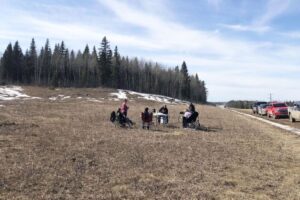By Rechell McDonald
Although you won’t be able to see it without a decent telescope, an asteroid is hurtling through space in our direction, and it is set to pass by us on Halloween. This asteroid, named 2009 FD, will pass by us at a distance of just less than 500,000 kilometres which is the closest flyby of an asteroid that we have experienced in a long time. There was a close flyby in 2006 and 2011, but only the 2006 encounter was similarly as close as this will be. NASA has also said that we can expect another relatively close flyby that would present the possibility of a collision in 2027.
NASA has stated that based on the asteroids estimated size of 300 meters in diameter, it can be called “potentially hazardous” but officially it has not been classified as such. Observers announced the approach of the asteroid earlier this month on October 10 as seen by the Pan-STARRS I Survey, but have said it was actually discovered in 2009.
“2009 FD was first noticed by the La Sagra Sky Survey in March 2009, but precovery observations were also found in Spacewatch data from February 24, 2009. The Minor Planet Center credits both search programs with the discovery.”
The asteroid is said to have an Apollo orbit, which means that it is an ‘Earth-crossing’ asteroid with a semi-major axis greater than our own. Other orbit classifications include two ranked lower than Apollo: Atiras and Atens; and two ranked higher on the danger list: Amors and PHAs (Potentially Hazardous Asteroids). 2009 FD falls right in the middle of the pack. Part of the reason the projectile is garnering some concern is because it is considered to be ‘eccentric’ which means its orbit is more elliptical than circular.
NASA is not concerned about a collision and is treating this as a good opportunity to study the asteroid, and potentially capture enough images to build a 3D image. For those looking to view the flyby, the majority of the asteroids journey by us will occur during the day in North America, making it extremely difficult to see without very powerful equipment.







More Stories
Rising tariffs, skyrocketing duties and an Albertan forestry industry in need of support at home